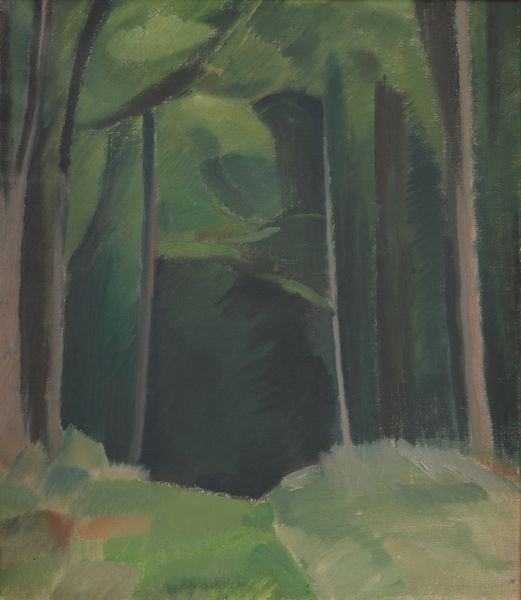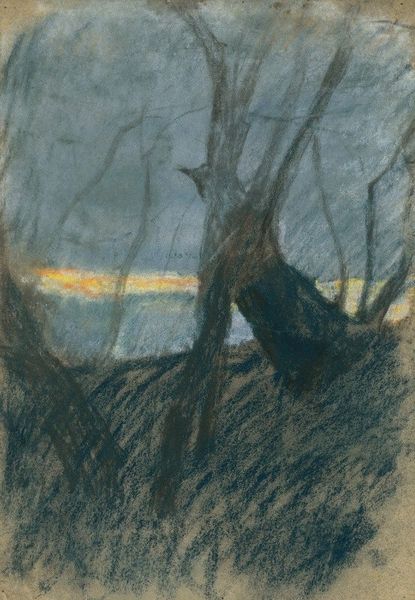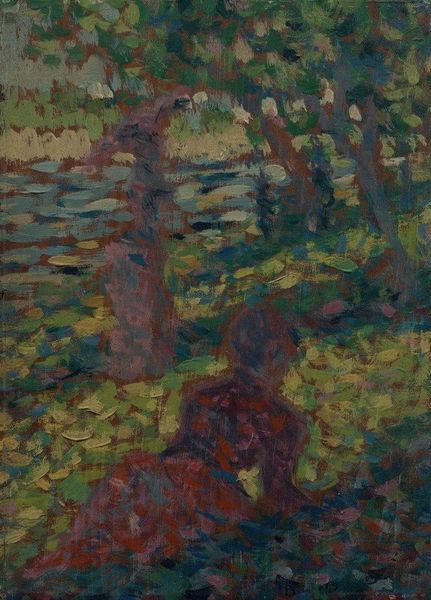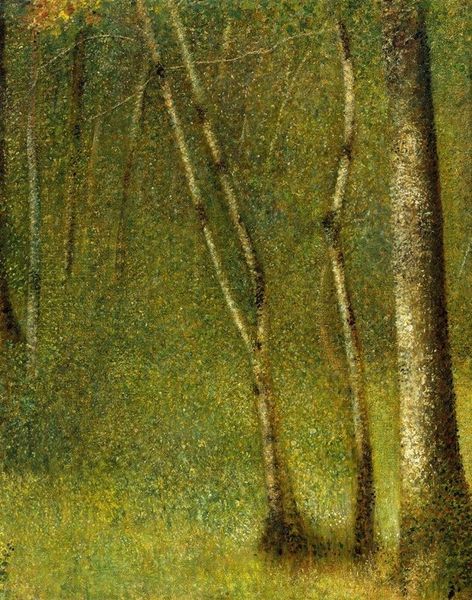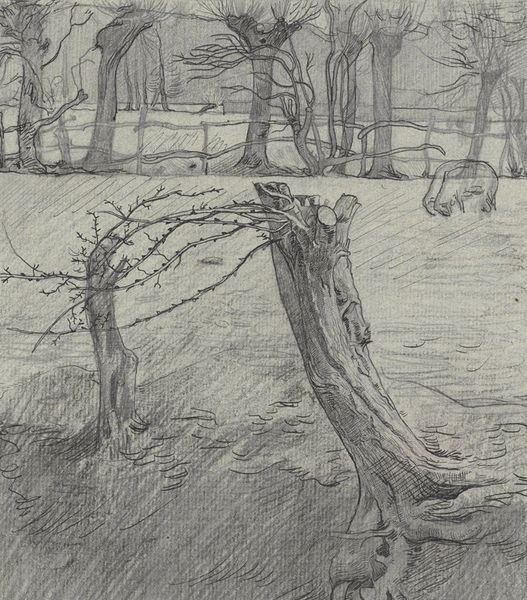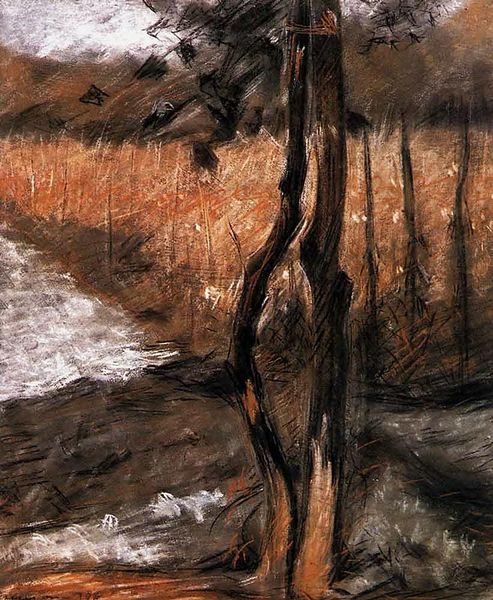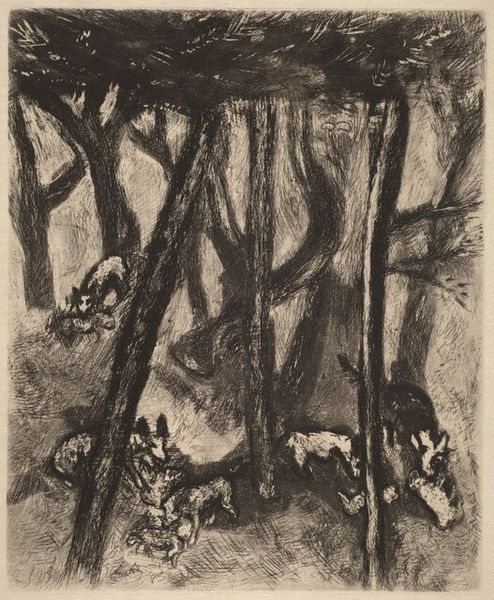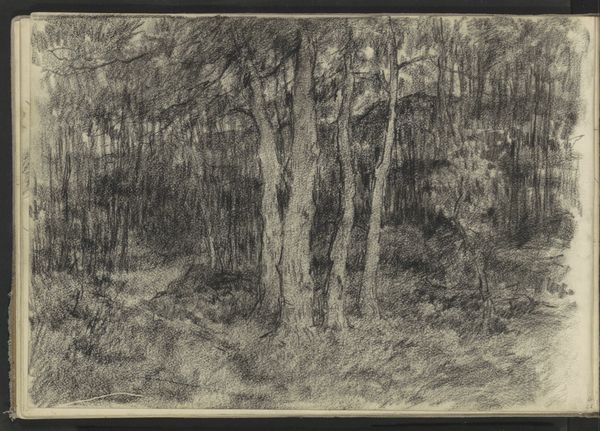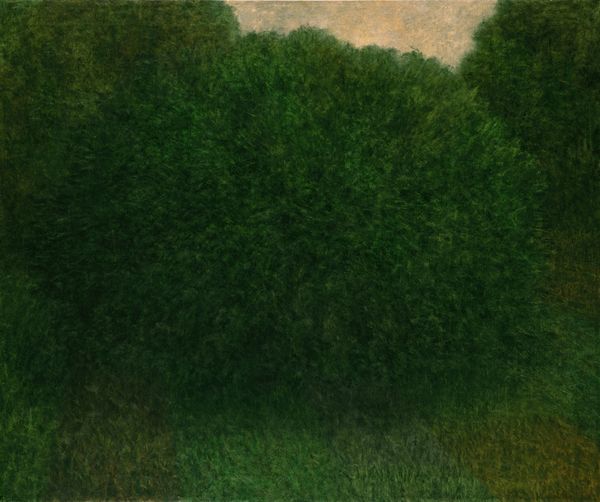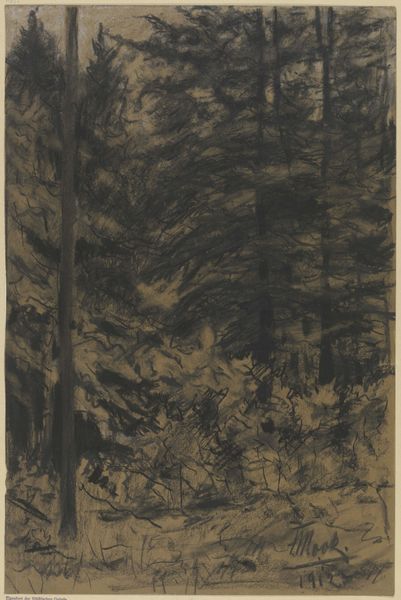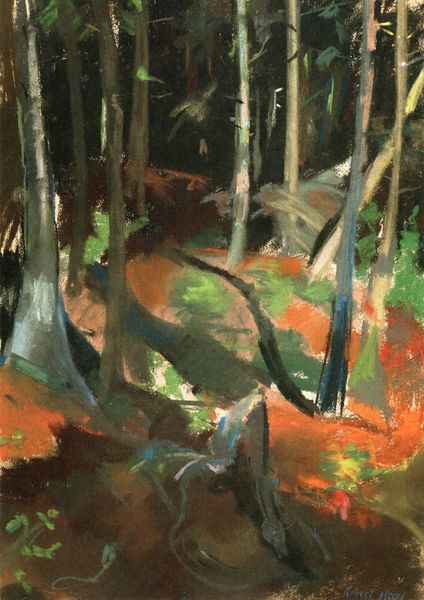
Copyright: Public Domain: Artvee
Curator: Let's consider Ladislav Mednyánszky's "Forest," created sometime between 1875 and 1885. The artist used pastel on, what appears to be, paper. What are your initial thoughts? Editor: Well, my first impression is a bit melancholic. The muted colors, almost monochromatic, create this enclosed, somber atmosphere. I wonder about the stories it holds and what is hiding behind those tree trunks. Curator: The visible pastel strokes contribute a texture that’s quite tactile. I’m curious about the specific type of paper chosen; its absorbency would significantly impact how the pastel adhered, influencing the final density and blending of color. The roughness also highlights the physical labor, each stroke the direct translation of movement. Editor: Right, and consider Mednyánszky’s positionality as a Hungarian artist living through immense social and political upheaval. A landscape like this could be a commentary on displacement, on the instability of identity within shifting borders and cultural landscapes. Curator: We might even consider where Mednyánszky sourced his materials. What workshops produced these pastels? Who was involved in the harvesting of raw materials for the pigment? How did trade and economics dictate availability of colour, especially concerning the dull browns and greens featured here? Editor: And what of the audience for whom this image was created? This wasn't just about trees but also about ideas of nationhood, identity, and perhaps even resistance in a society that was trying to contain those things. It encourages questioning dominant narratives of art as simply aesthetic objects. Curator: The very act of drawing becomes significant then. The way the material resists control, offering a space of negotiating the landscape, blurring lines between observer and observed, artisan and art. The labor invests meaning. Editor: Precisely. "Forest" gives us an entry point for thinking about representation in terms of both visibility and agency, particularly within the broader struggle for marginalized communities and their place within ever changing spaces. Curator: Considering the composition of this piece, I am stuck on the lack of depth of the "incomplete sketchy". The artistic choices about depth become crucial to appreciating the value that has been imbued in this artwork. Editor: Ultimately, for me, this small sketch of the "Forest" encapsulates a crucial narrative about identity, belonging, and the silent but persistent negotiation of space, identity, and power dynamics. Curator: And by paying attention to process and production, to where materials came from, and the impact of Mednyánszky’s hand we can appreciate how materiality is always a tool of the artmaking process.
Comments
No comments
Be the first to comment and join the conversation on the ultimate creative platform.
